Morocco is home to a variety of animals, including some that are found in the Sahara desert. The climate and terrain of the Sahara desert in Morocco can be harsh for many species but there are still a number of animals that have adapted to its conditions. Some of the animals that inhabit this region include dromedaries, fennec foxes, deathstalker scorpions, Saharan silver ants, Saharan striped polecats, common kestrels, and black-bellied sandgrouse. Other birds such as short-toed snake eagles and barn owls also make their homes in this environment. Despite the harshness of the Sahara desert, these animals have managed to thrive among its landscapes and ecosystems.
Dromedaries
The dromedary camel is a species of large mammal that is highly adapted to the arid conditions of the Sahara Desert in Morocco and plays an important role in the region’s ecosystem. It has thick fur to keep it cool and insulated, as well as a hump that stores fat for energy. Camels are able to survive long periods of time without water, as well as eat thorny plants which other animals cannot consume. This ability makes them uniquely suited for the desert climate, allowing them to thrive in harsh conditions where few other species can survive. Furthermore, their presence helps sustain many other species by providing food and shelter during harsh times. As such, the dromedary camel is an invaluable part of Morocco’s Saharan ecology. Moving on from the dromedary camel, another animal found in this region is the fennec fox.
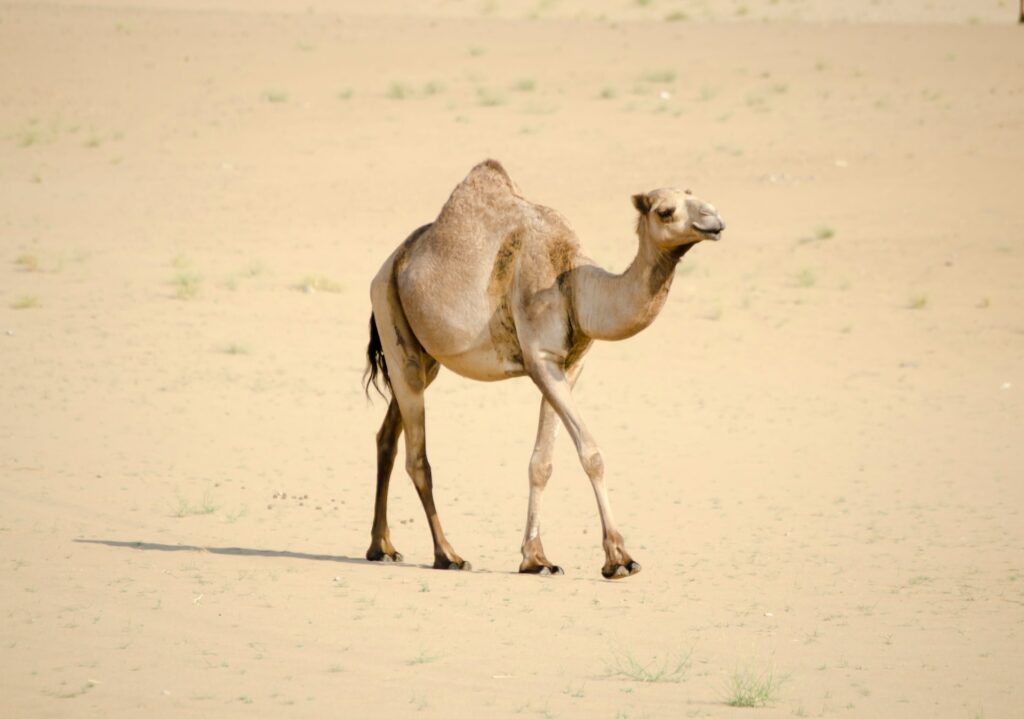
Fennec fox
Native to the Sahara desert, the fennec fox is an endearing animal that has adapted to its environment with unique features such as large ears. These oversized ears help the fox to dissipate heat in the hot climate and also assist it in hearing prey moving underground. In addition, their nocturnal nature provides them with a competitive advantage over other animals in the desert:
- Adaptations
- Physical
- Large ears for thermoregulation & sound amplification.
- Nocturnal behavior for hunting potential food sources.
- Behavioral
- Opportunistic scavenging for small mammals and birds.
- Foraging on insects like ants, beetles, and locusts.
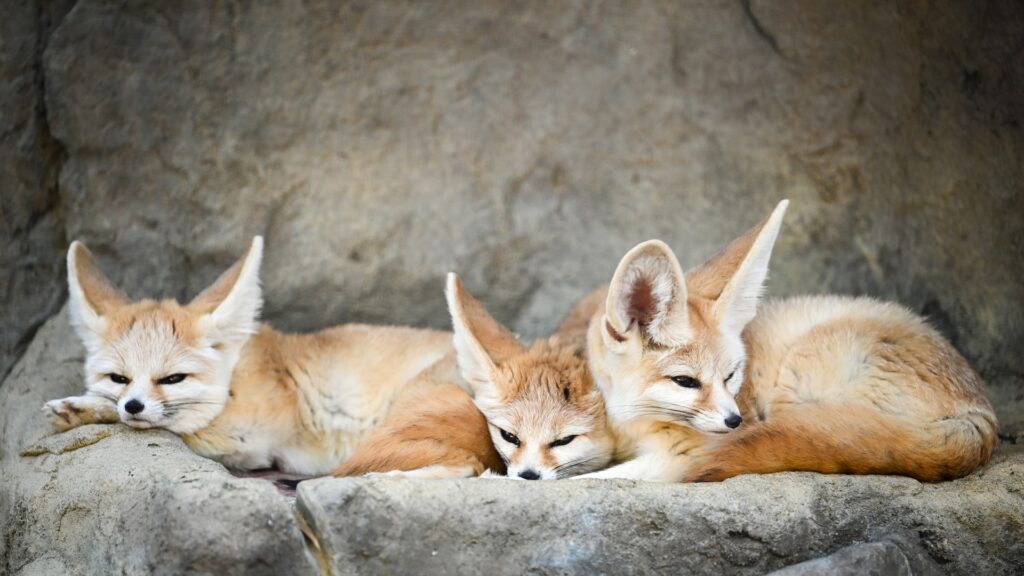
The fennec fox’s ability to survive in an unforgiving environment is remarkable; however, this pales in comparison to the remarkable adaptations of another animal found in Morocco’s Sahara desert: The deathstalker scorpion.
Deathstalker scorpion
A remarkable invertebrate found in the arid region of North Africa, the deathstalker scorpion is considered one of the most venomous species in the world, with a sting so potent that it can be fatal for humans. It has a distinctive yellow-brown body with black spots and a large curved tail that holds its venomous stinger, which is usually used as a defense mechanism against predators. While its sting can cause serious medical complications and even death if left untreated, modern treatments are available to help people recover from envenomation. Despite their dangerous reputation, deathstalker scorpions are an important part of the fragile Sahara Desert ecosystem and must be respected by those who visit or live there. With this knowledge comes an appreciation for nature’s power and beauty which can inspire us all to take greater steps towards preserving this delicate environment.
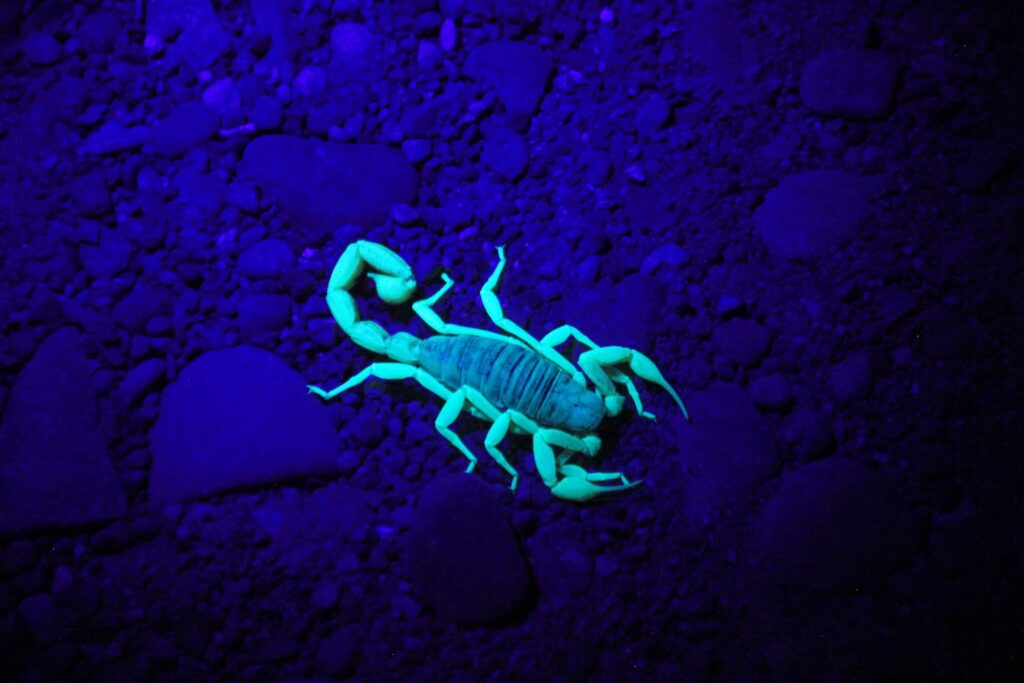
Saharan silver ant
Swiftly traversing the sand-covered expanse, the Saharan silver ant’s silvery body shimmers like a mirage in the desert heat, reminding us that life can persevere even in the most hostile of environments. These hardy creatures are equipped with powerful jaws and claws that help them to tunnel through the sandy terrain with ease. They also have an impressive defense mechanism; their venom is toxic to other insects and has been known to disable or kill small prey items.
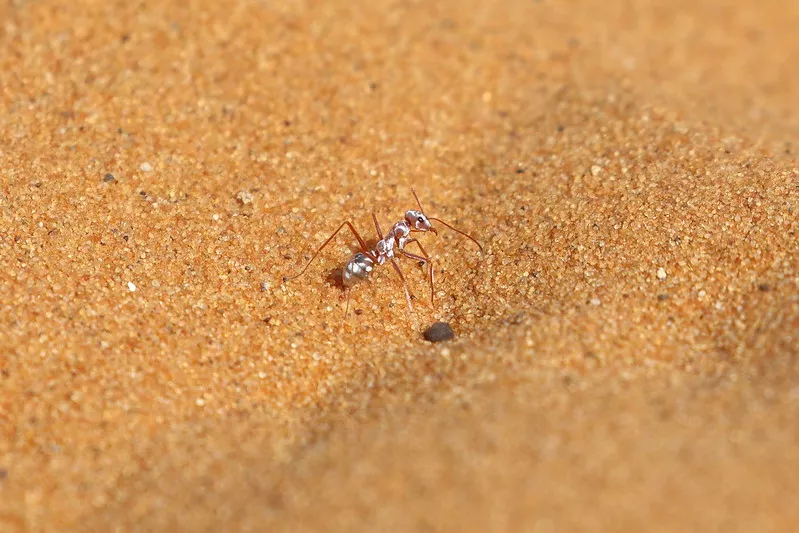
The Saharan silver ant’s diet consists mainly of seeds and other small organisms found nearby, such as spiders, beetles, and larvae. They may also feed on plant material or scavenge carrion when possible. In addition to being fierce predators in their own right, they are a vital part of the Sahara Desert ecosystem in Morocco; they act as pest controllers by preying upon harmful insects and keeping populations of certain species in check. A lesser-known fact is that these ants also provide food for larger animals such as birds and foxes who rely on them for sustenance!
Saharan striped polecat
Enduring the harsh desert conditions, the Saharan striped polecat is a resilient species of nocturnal weasel found in parts of North Africa. The polecat has adapted to survive in semi-desertic environments and prefers steppe-like habitats, living on the margins of deserts with mountainous terrain and stony surfaces. Growing up to 20 inches long and weighing 1.5–2 pounds, these animals have yellowish-brown fur with black-tipped hairs along their back that run down into six longitudinal stripes across their body. They feed primarily on small mammals such as mice but also consume insects and reptiles when other food sources are limited.
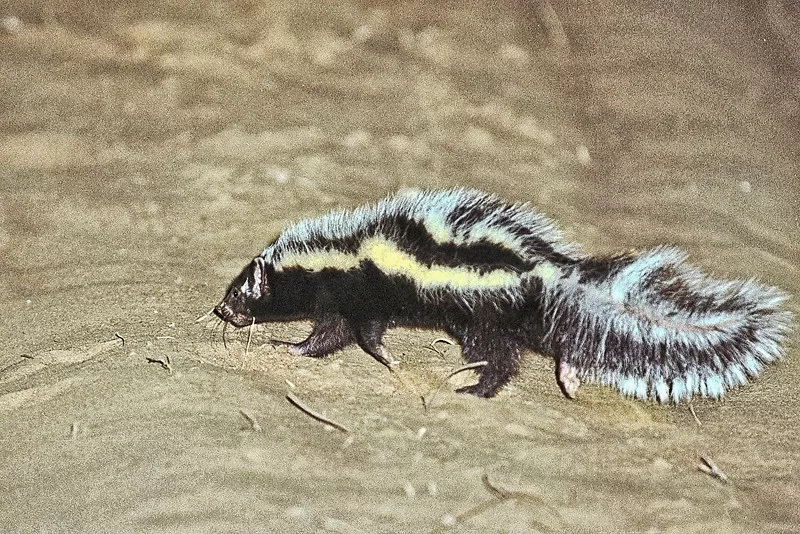
With their population under threat due to poaching for their fur, there has been an increased effort by conservationists to protect these animals from extinction and ensure their long-term sustainability in Morocco’s Sahara Desert. With this newfound awareness, hopefully, the Berber skink can coexist peacefully with these interesting creatures of the African desert.
The Berber skink
The Berber skink is a species of lizard unique to the Sahara desert in Morocco. This small, sand-colored reptile is the second-largest lizard species found in this region and is characterized by its pointed snout and long tail. It’s also especially adept at surviving in harsh desert conditions due to its ability to burrow into sandy soils.
The Berber skink can often be seen basking on rocks or fallen branches during the day, absorbing heat from the sun. They feed mainly on insects, spiders, and other invertebrates they find while searching for food inside crevices or beneath stones. Additionally, they have been observed hunting birds’ eggs and even small mammals like mice or shrews! Some of their distinct features include:
- Long bodies with short legs that enable them to quickly dig into sandy soils
- A pointed snout that helps them sniff out prey
- Brightly colored eyes that help them detect movement
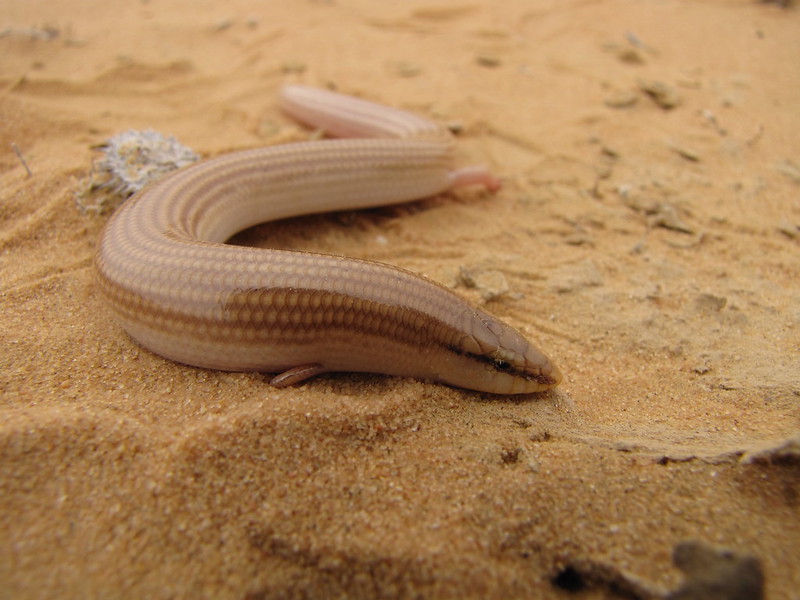
The adaptability of these animals makes them a perfect fit for life in an ever-changing environment like the Sahara desert of Morocco. As we move forward, let us take a look at another fascinating creature native to this region – the Saharan sand viper.
Saharan sand viper
Gracefully slithering through the sand, the Saharan sand viper is a venomous snake native to the arid environment of North Africa. They are well-camouflaged and difficult to spot due to their coloration that matches their sandy habitat. This species of snake is short in length, usually ranging from 30 to 60 cm, and they have adapted the ability to bury themselves in the sand for protection from extreme temperatures as well as for ambushing prey such as lizards and small mammals. The Saharan sand viper typically moves at night during spring and summer, sidewinding over the desert sands with remarkable speed. When threatened by potential predators or harm, they may produce a sound simply by contracting their coils together. Thusly equipped for survival in this harsh environment, these snakes are formidable animals of Sahara desert wildlife in Morocco.
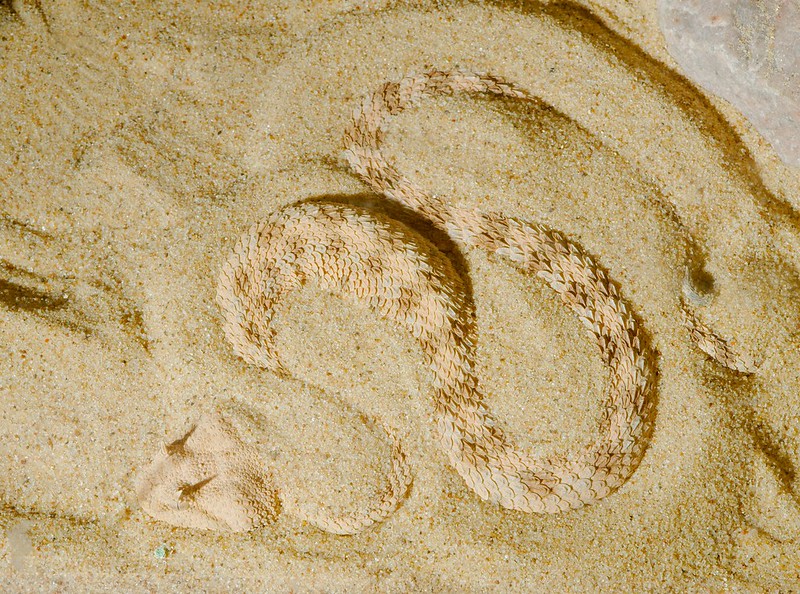
Desert Mice (Jarboa)
The desert environment of the Sahara desert of Morocco is home to many unique animals, including the Jarboa mouse. The Jarboa mouse is a small rodent that is very similar in appearance and behavior to the kangaroo. It has a long tail, short front legs, and long hind legs, and it moves by hopping or saltation just like a kangaroo. During the day these mice hide in underground burrows for protection from predators but are mostly active at night. They can be spotted while trekking through the Chegaga dunes or Erg Chebbi in Morocco. Another mammal that inhabits this arid climate is the desert hedgehog.
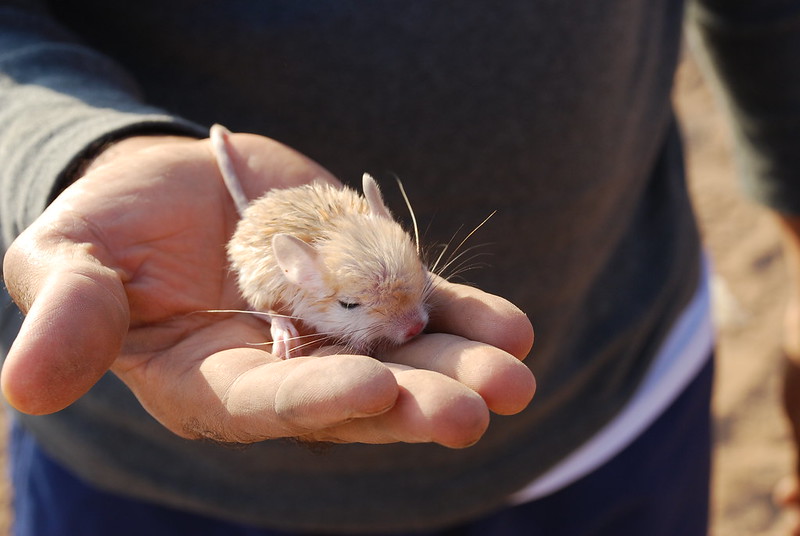
Desert Hedgehog
Fleetingly glimpsed by adventurous travelers, the Saharan hedgehog is a diminutive mammal that is endemic to the Sahara desert regions of Morocco. This species is among the smallest of all hedgehogs and can measure up to 11 inches in length and weigh around 280 grams. As they are nocturnal animals, they remain largely elusive during daylight hours.
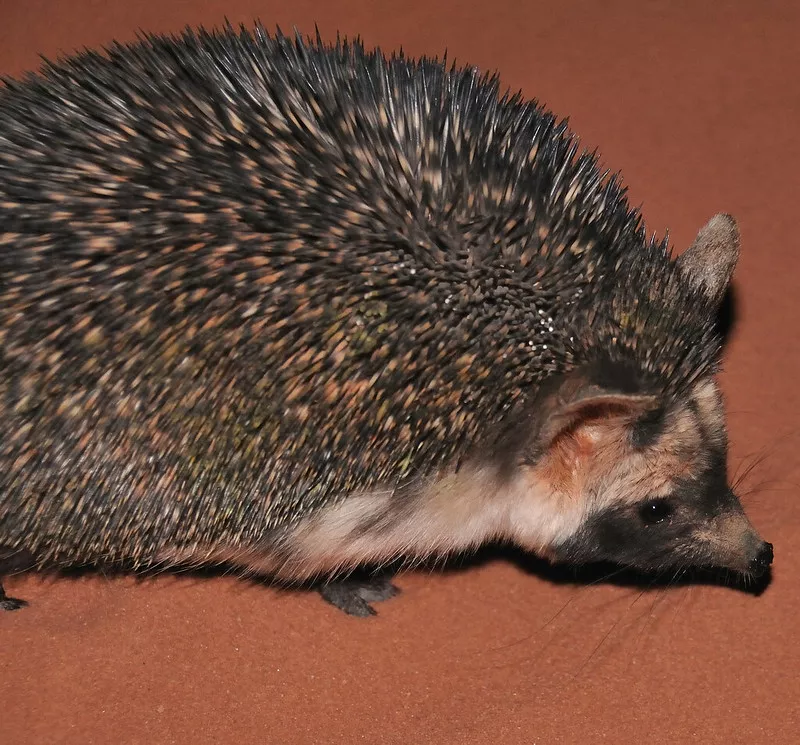
Though classified as the least concern on the IUCN Red List, their numbers have been known to suffer from road mortality in certain areas. The female hedgehog gives birth to up to 6 young who are born blind and deaf with their quills under their skin for protection. After a few hours, these quills emerge and it takes approximately 20 days for them to open their eyes. Despite being so small and fragile, this animal is well adapted to its harsh environment enabling it to survive long periods without food or water. With its unique ability to blend in with its surroundings, this remarkable creature offers an enchanting yet fleeting glimpse into the life of one of Morocco’s most iconic animals that live in the Sahara desert. Moving on from here we now turn our attention towards the lizards inhabiting these arid lands…
Desert lizards
The Sahara Desert of Morocco is a unique environment that is home to many different species of animals. After discussing the desert hedgehog, we now turn our attention to another common inhabitant of the Sahara – the lizard. Lizards are ectothermic reptiles that can be found in many parts of North Africa, including Morocco. They have adapted to survive in this harsh climate by relying on external sources of heat for thermoregulation and by burrowing into the sand during extreme temperatures.
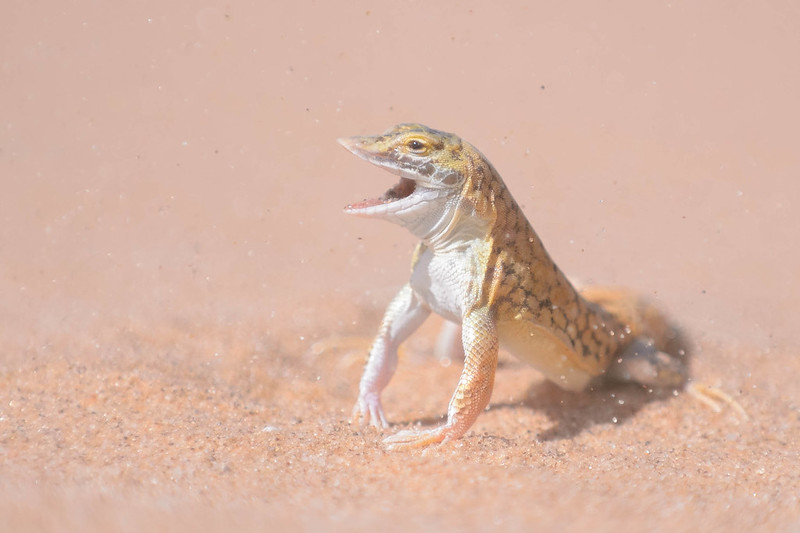
There are several species of lizards found in this region, such as the monitor lizard, sand lizard, and gecko. These lizards mainly feed on insects and small invertebrates, although some also eat fruits and other plant matter. The ecology of these lizards is closely linked to their habitat; they depend on it for food, shelter, and protection from predators. Despite its harshness, the Sahara has become an important home to these creatures which play a vital role in maintaining balance within their ecosystems.
Pale fox
Sporting pale fur which allows it to blend into its sandy surroundings, the pale fox is an elusive nocturnal predator found in the Sahara Desert of Morocco. Its diet consists of:
- Insects
- Small mammals
- Birds
- Plant matter when food is scarce
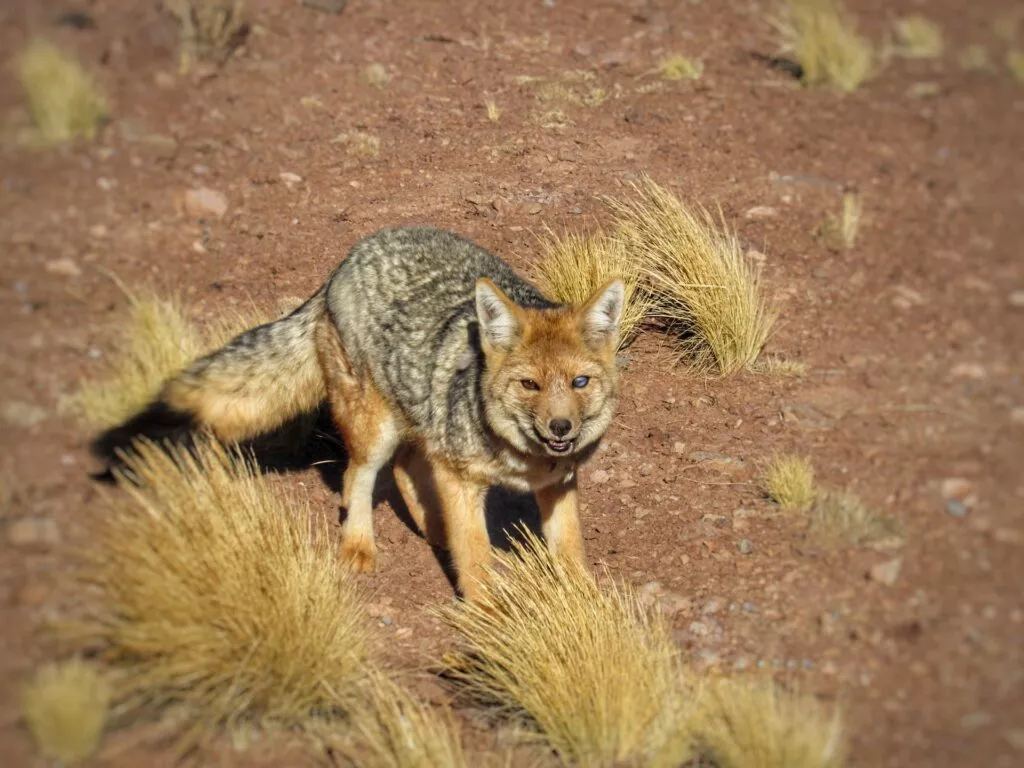
The pale fox’s ability to hunt and scavenge for food makes it well-adapted to survive in this harsh environment. This species of fox has evolved various behaviors that enable it to survive, including digging burrows in the sand for protection from extreme temperatures and forming packs with other foxes to help defend its territory and prey on larger animals. The adaptation strategies used by the pale fox are vital components in its success as a species of animal living in the Sahara Desert of Morocco. As such, it serves as an important reminder of how nature can thrive even under difficult conditions, inspiring us all with a subconscious desire for freedom and independence from our own limitations.
Desert Beetles
Surrounded by the desert, there is a species of beetle that can be found scuttling across the sand dunes with remarkable agility and resilience. The beetles of the Sahara Desert in Morocco are diverse and varied, ranging from small to large sizes. These insects have adapted special features such as waterproofing layers that enable them to survive in harsh conditions.
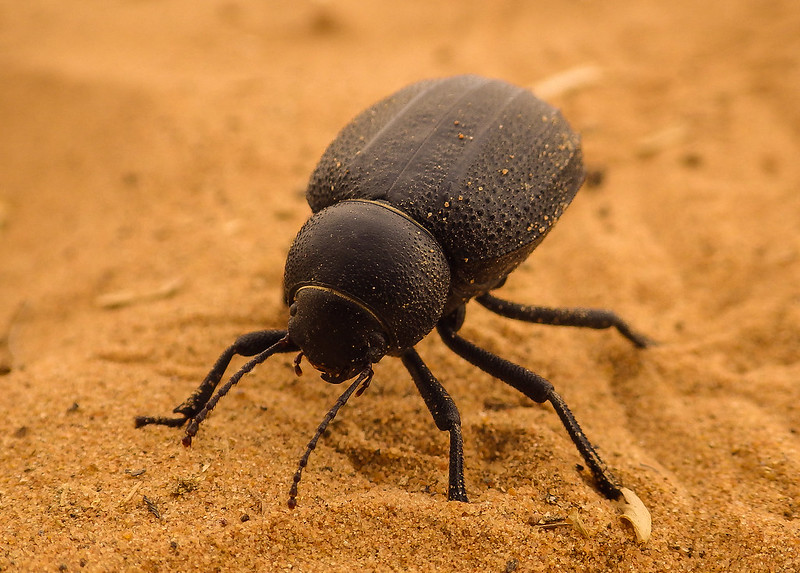
Many species are nocturnal and some even give off a soft glow due to their bioluminescent nature. Beetles are also an important part of desert ecosystems because they act as predators, scavengers, or decomposers depending on the species. They feed on dead plants or animals and help break down organic matter into nutrients for other organisms in the food chain. As such, these arthropod animals play an integral role in maintaining a healthy balance in the ecosystem of the Sahara Desert of Morocco. With their unique adaptations, beetles make excellent inhabitants of this vast landscape full of opportunity and adventure. Moving onwards through this captivating environment, one can find another creature taking refuge here: The Barbary Ground Squirrel.
Barbary Ground Squirrel
Resiliently scurrying across North Africa’s rocky grounds, the Barbary ground squirrel is an intriguing species that relies on seeds and fruits for sustenance. This small, agile creature can be found in the Anti Atlas mountain and a small rocky oasis of the Sahara Desert in Morocco. With their sharp claws and nimble movements along with quick reflexes, they are able to traverse their environment with ease. Some of its main dietary staples include:
- Almonds
- Argan
- Nuts
- Berries
- Fruits
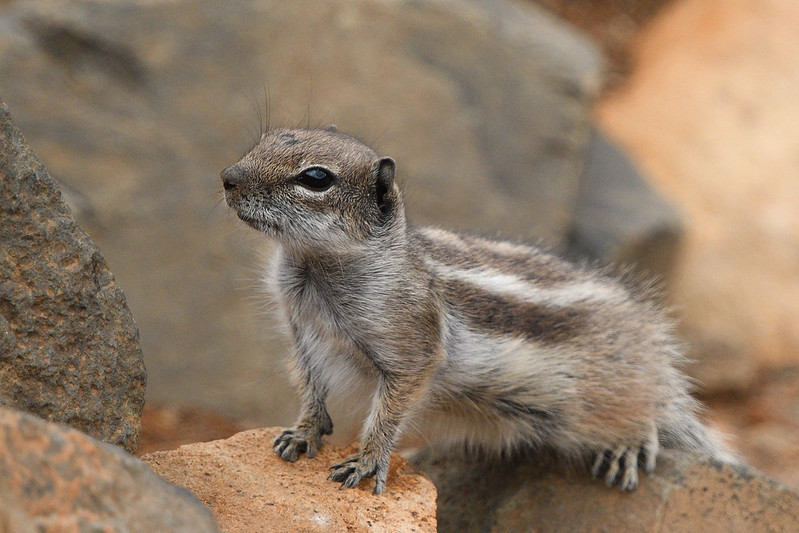
The Barbary ground squirrel is also known as a true hibernator; it spends most of the year asleep, without eating or drinking anything at all. Being able to adapt to extreme temperatures and climates makes this species a remarkable mammal of North Africa’s arid regions. As this unique species continues to thrive in its harsh habitat, it serves as a prime example of how animals can survive even in difficult conditions. Transitioning into its close relative, the Uromastyx lizard inhabiting Morocco’s Sahara Desert is similarly equipped for success in such trying circumstances.
Uromastyx
Scampering across the rocky terrain of North Africa, the Uromastyx lizard is an adaptable creature that sustains itself on a diet of insects and vegetation. This type of animal is known as the spiny-tailed lizard and lives in big numbers in the southeast of Morocco. They are primarily herbivorous, but occasionally eat small animals such as insects. Uromastyx can be found basking in the sun during spring and summertime, mainly around a hilly or rocky area. Its color changes according to temperature variations; it will become lighter (green and orange sometimes) when temperatures rise up.
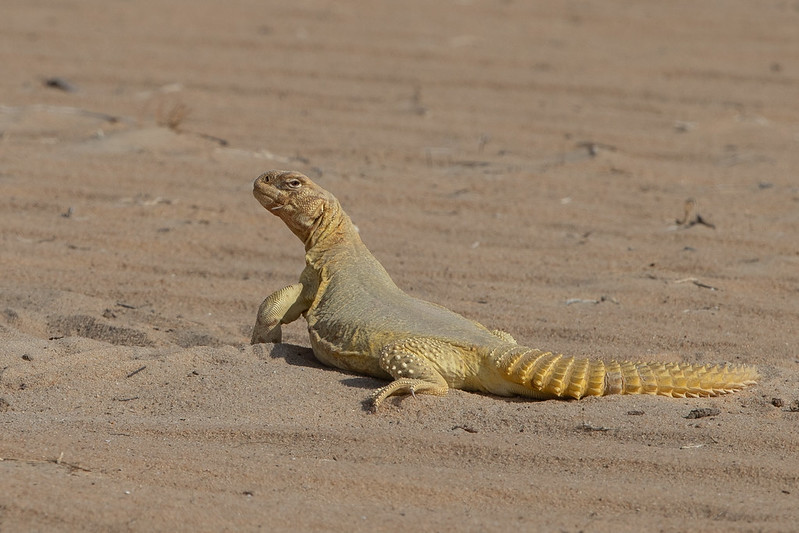
As many reptile species do, Uromastyx also has its own set of adaptations that allow it to survive in this harsh environment. Its diet helps it stay hydrated due to the high water content of plants, while its thick skin protects them from predators and extreme weather conditions. The ability to change colors also offers protection against predators by blending into their environment when needed. With all these features combined, this lizard is able to thrive in its natural habitat with ease and grace.
Addax
Grazing the arid lands of North Africa, the Addax antelope is a rare species that can be identified by its long, curved horns and white coat with black markings. This unusual antelope has adapted to desert conditions and can travel great distances in search of food and water. Their hooves are flat which allows them to spread out their weight on soft sand, aiding movement across the dunes of the Sahara desert. They also have a unique jumping ability allowing them to cover large distances quickly.
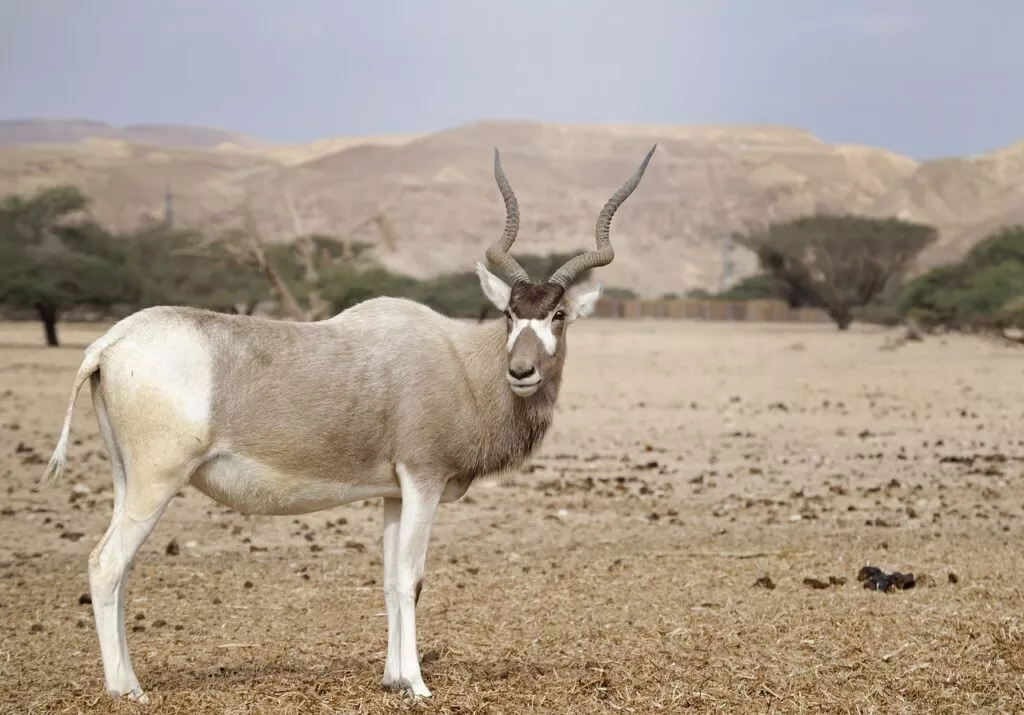
The Addax is an incredibly hardy species that has managed to survive in some of the harshest environments on Earth. Its coat provides camouflage from predators and helps it regulate body temperature in extreme temperatures. With these adaptations, the Addax continues to thrive despite human encroachment on its habitat. As such, this majestic creature carries with it an inspiring message of resilience in difficult times and serves as a symbol of hope for those who seek freedom.
Red-necked ostrich
The red-necked ostrich is the largest bird in the world, standing up to 2.7 meters tall and weighing up to 156 kilograms. It is found mainly in the Sahara Desert of Morocco and other parts of Africa, where it relies on its great speed for survival. The ostrich can reach speeds of up to 70 km/h and uses its powerful legs to kick predators away if necessary. It also has an excellent sense of hearing that allows it to locate food or potential danger from far away distances.
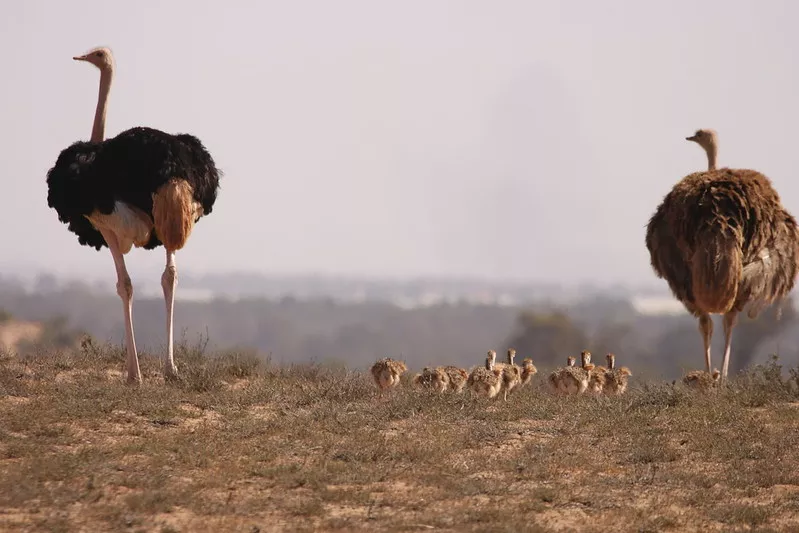
The diet of the red-necked ostrich consists mainly of plants, insects, small mammals such as rodents, and even reptiles. Its long neck helps it reach taller vegetation which is otherwise inaccessible for most animals in the Sahara desert of Morocco. As a result, it plays an important role in maintaining balance within African ecosystems by providing food for many species including large predators like lions and cheetahs. Despite their size and strength, ostriches are still vulnerable to poaching due to their valuable feathers which have been used for clothing over centuries. This makes them one of the main endangered species in Morocco’s Sahara Desert ecosystem, highlighting how fragile this environment truly is. With this in mind, transitioning into a discussion about cape hares is imperative so that we can better understand how human activities are affecting animal populations across Moroccan deserts today.
Cape hare
The Red-necked ostrich, though found in the Sahara Desert in Morocco, is much larger than the Cape hare. In contrast, the Cape hare is one of the smallest species of African hares and it is well adapted to its desert environment. It has large ears that help it to detect predators from a distance and long legs for quick escapes. This mammal also uses its sharp claws to construct burrows as a refuge from heat and predators alike. The Cape hare’s fur ranges from grayish-brown to reddish-brown depending on the season and can be seen in parts of North Africa including Morocco’s Sahara Desert.
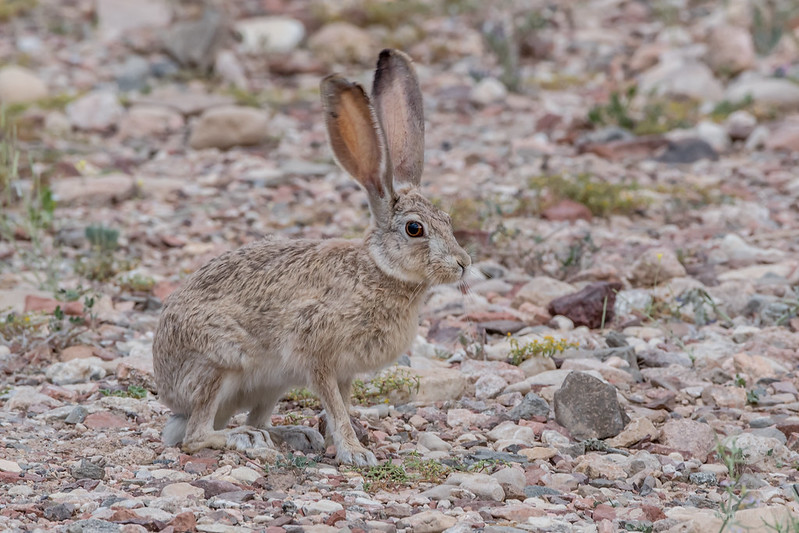
Porcupine
Porcupines are large rodents native to Africa, possessing quills used as a defense against predators. These animals primarily inhabit the Sahara Desert in Morocco and feed on plants, fruits, and insects. Porcupines have excellent hearing and eyesight, allowing them to detect potential threats quickly. In terms of defense mechanisms, they rely mainly on their sharp quills which act as a form of armor when threatened. These quills are hollow and filled with air, making them lightweight yet sturdy enough to pierce through skin and injure attackers. Additionally, porcupines can also run away or use their long claws to dig up defensive burrows in the ground for shelter.
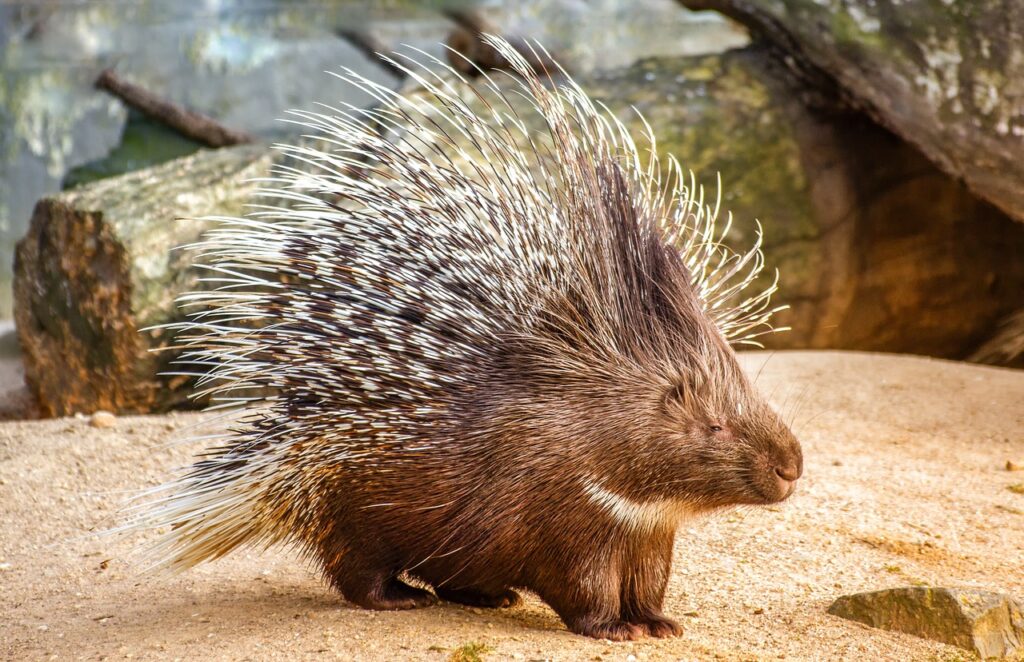
The diet of a porcupine largely consists of vegetation such as cacti and succulents found in the desert environment. They also consume small insects like beetles when available. This omnivorous diet ensures that they get all the vital nutrients necessary for survival in this arid region:
- High-fiber foods provide essential energy sources
- Insects offer protein for muscle growth
- Fruits contain vital vitamins and minerals needed for healthy body function. With these food sources readily available across its range, it is no surprise that porcupines remain common throughout much of Africa’s desert habitats. Transitioning into discussing sand cats now…
Sand cat
The porcupine is a mammal that is found in the Sahara Desert of Morocco, but it is not the only animal. Another interesting species found in this region is the sand cat. This small feline thrives in hot and dry climates, as its large ears help to dissipate heat. Sand cats are nocturnal hunters, preying on rodents, birds, and insects for sustenance. In addition to their keen senses of hearing and smell, they can also see well in low-light conditions; an adaptation that allows them to hunt during twilight hours. With its thick fur coat and large feet which act as snowshoes when traversing sandy terrain, the sand cat has adapted remarkably well to life in the desert of Morocco. From these physical adaptations, it is clear that the sand cat was designed with survival in mind.
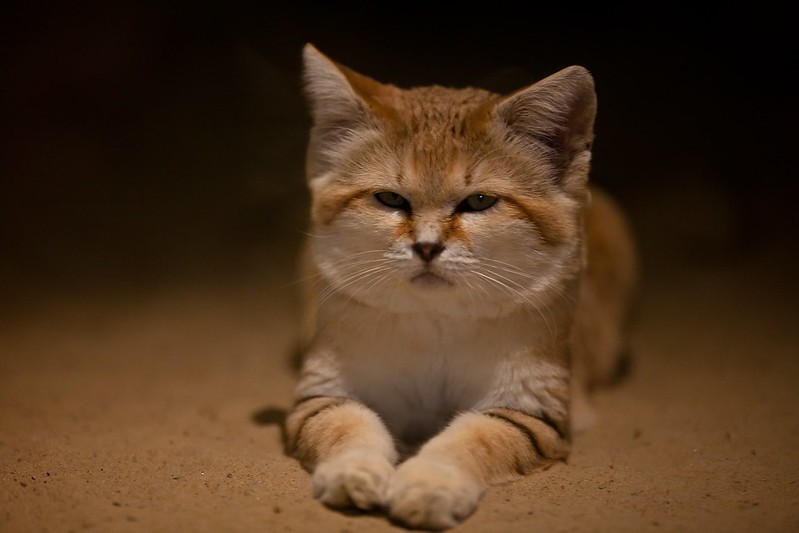
The next creature we will explore from this environment is the sandgrouse; another fascinating inhabitant of Morocco’s Sahara Desert. These small birds are remarkable for their ability to fly long distances across vast stretches of desert sands seeking water sources for themselves and their young chicks; an impressive feat indeed!
White-crowned black wheatear
The white-crowned black wheatear is a small, black avian species that occupies the arid regions of North Africa. This species is well-adapted to harsh desert conditions and can be found nesting in the sand. These birds feed on insects and seeds, which helps them survive in such an inhospitable environment.
Three key characteristics of the white-crowned black wheatear are its size, coloration, and diet:
- It is a relatively small bird with a wingspan of 14–17 cm (5.5–6.7 inches).
- Its feathers are dark-brown in hue with distinctive white stripes across its crown.
- Its diet consists mainly of insects and seeds found commonly in desert areas.
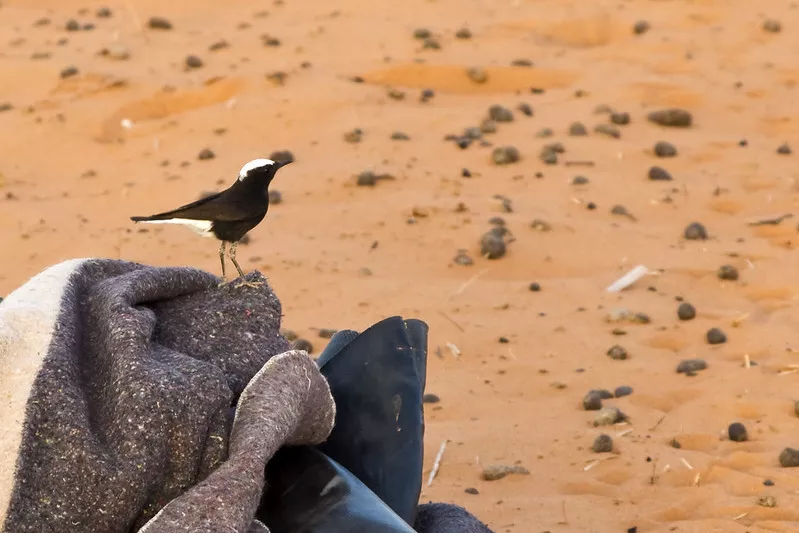
These types of animals have features that allow them to thrive in the Sahara Desert of Morocco along with other animals adapted to this unique habitat. From here we move to another common inhabitant of the region—the common kestrel—to continue exploring the wildlife of this remarkable area.
Common kestrel
A prime example of a species that flourish in the arid environment of North Africa is the common kestrel, an agile predator renowned for its ability to hover. The common kestrel is a small falcon native to the region and can be found in dry deserts, steppes, savannas, and other open habitats. They typically feed on insects and rodents which they hunt using their characteristic hovering flight pattern. Common kestrels have adapted well to human presence, often nesting on buildings or perched atop utility poles. Their bright plumage also makes them easily visible as they soar through the sky in search of prey. This adaptability has allowed them to remain abundant despite habitat loss and fragmentation due to human activity. With its adept hunting skills and colorful feathers, the common kestrel is certainly a magnificent sight in the Sahara Desert of Morocco.
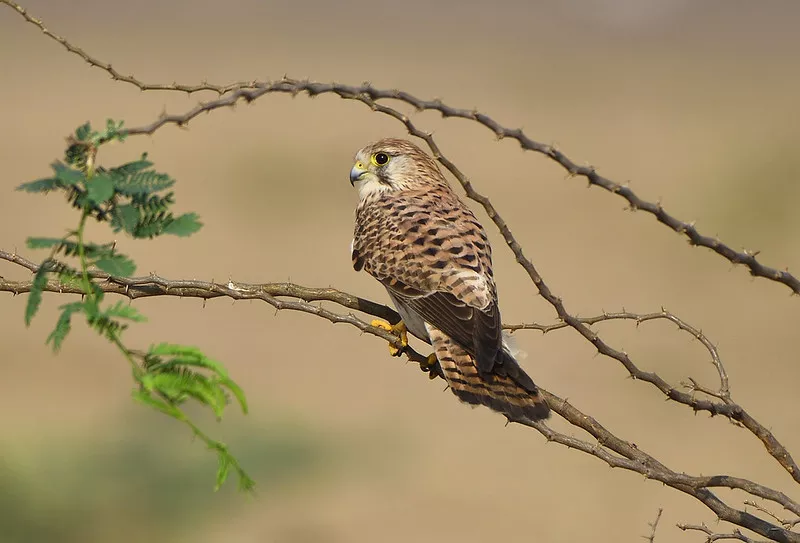
Sandgrouse
Sandgrouse has a remarkable ability to traverse miles of arid land in search of sustenance and water sources. Their long legs, necks, and heat-trapping feathers provide them with the necessary tools to survive in desert conditions. In Morocco’s Sahara Desert, Sandgrouse can be found foraging for food on the ground or searching for water in shallow pools. They are also known to form flocks of up to 200 individuals while they feed or migrate. The birds consume a variety of plant matter as well as small insects, which are eaten during brief stops along their journey. Sandgrouse typically nest in large colonies where they can better protect themselves from predators such as snakes or foxes. Additionally, these birds have been observed using communal dust baths that help keep parasites away while keeping their feathers clean and aerated.
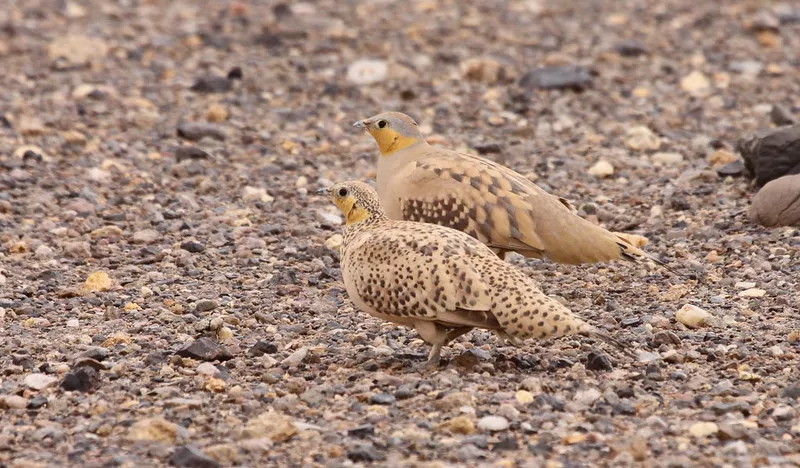
Black-bellied sandgrouse
Adapting to the harsh environment of North Africa, the black-bellied sandgrouse is a resilient species found in arid regions. They have a striking appearance with their black belly and chest and are well-suited to the dry conditions of the Sahara Desert in Morocco. To survive, they rely on two sources of hydration:
Rainwater – when it rains, they consume water from puddles
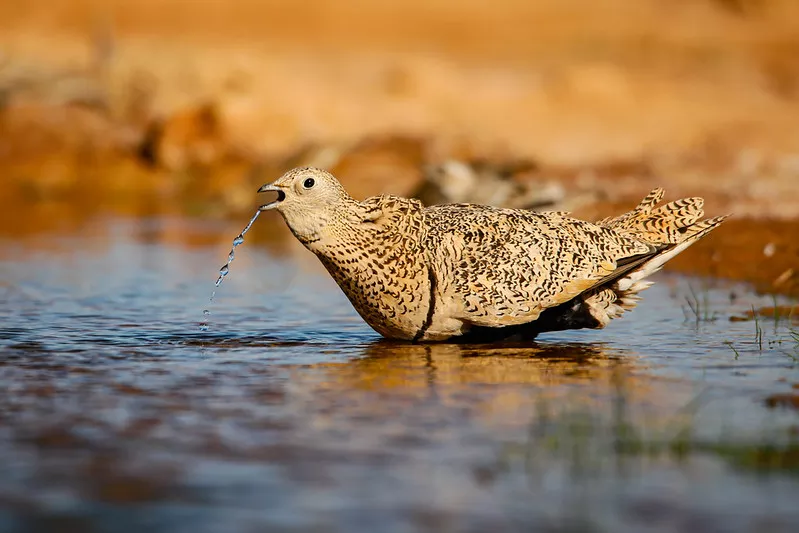
- Plants – they get moisture from eating plants
The black-bellied sandgrouse also has an interesting behavior that helps them survive in such harsh climates: these birds can fly long distances over large stretches of desert terrain to find water. This gives them access to food and other resources that may not be accessible by walking or running. This remarkable ability allows them to thrive in such extreme environments where other animals would struggle to survive. With this unique adaptation, the black-bellied sandgrouse is an essential part of the Sahara Desert ecosystem in Morocco. Transitioning seamlessly into a new environment, the short-toed snake eagle takes advantage of its impressive flying abilities as it searches for food across miles of desert land.
Short-toed snake eagle
Gliding gracefully through the air, the short-toed snake eagle is a formidable predator of the North African landscape. A medium-sized bird of prey, it is found exclusively in the Sahara Desert region of Morocco and other parts of North Africa. Its diet consists mainly of snakes, lizards, and small mammals, all captured with its sharp talons. It has adapted to this harsh environment by having feathers that are lighter than normal eagles, reducing drag when flying through the desert winds. The short-toed snake eagle also has distinctive yellow eyes that allow it to pick out its prey from afar. These adaptations make it well-suited to life in the arid regions of the Sahara Desert.
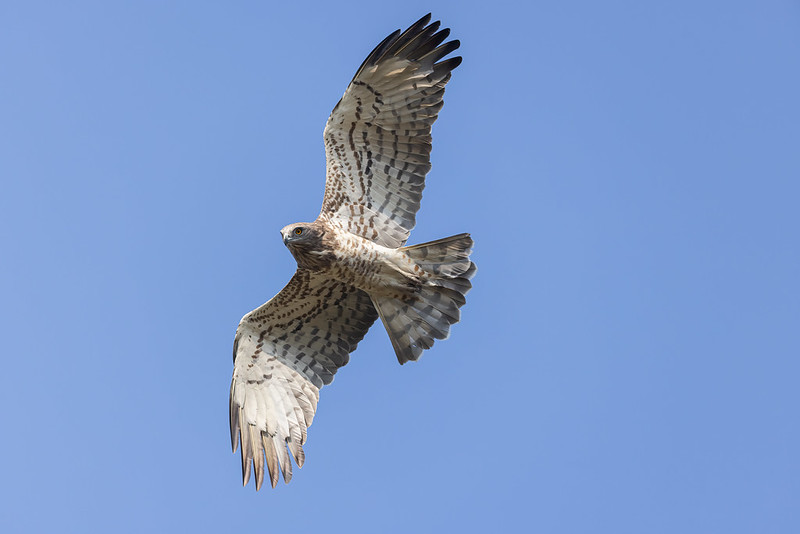
In addition to being a successful hunter, the short-toed snake eagle has become an important symbol in Moroccan culture as a symbol of freedom and strength. The people of Morocco have long admired these birds for their ability to soar so gracefully over their lands, embodying a sense of freedom that they aspire towards themselves. This admiration only grows more profound as one witness how quickly these birds can take down their prey or dodge obstacles while hunting in flight. Thusly, it’s no surprise that this majestic bird continues to be celebrated throughout Morocco today due to its presence in such a diverse landscape as well as its symbolic representation within its culture.
Sun spider (camel spider)
Camel spiders are a type of spider that lives in deserts and other dry places around the world. They are also called wind scorpions, sun spiders, and solifuges. They are not linked to spiders or scorpions, but they are a lot like them in some ways. Camel spiders have eight legs, a segmented body, and two pincers. Most types are between 2 and 6 inches long, but some can get as big as 12 inches.
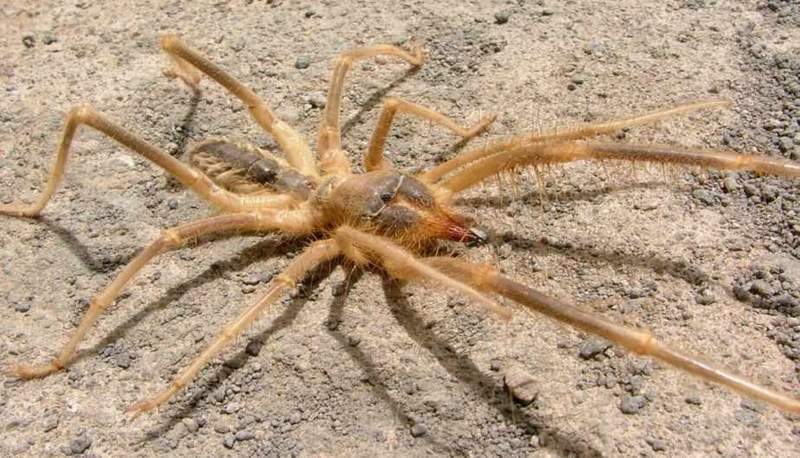
Camel spiders can move up to 10 miles per hour and are fast movers. They can also jump well and can jump up several feet. Camel spiders are hunters that eat insects, spiders, lizards, and small mice. They catch and kill their food with their strong mouths and pincers.
Camel spiders don’t have poison, but if they bite you, it can hurt. They can also spray a liquid with a bad smell from their bellies. People don’t think that camel spiders are dangerous, but they can be scary to look at.
Conclusion
The Sahara Desert is a unique destination for Morocco, as it houses a variety of animals that are not found elsewhere. The presence of the Dromedary camel, Fennec fox, Deathstalker scorpion, Saharan silver ant, and Saharan striped polecat are all indicative of its harsh climate. Further adding to this unique ecosystem are the Common kestrel, Black-bellied sandgrouse, Short-toed snake eagle, and camel spider. Despite the inhospitable environment in which these creatures must live, they continue to thrive in their natural habitats. In some ways their resilience is a testament to the power of nature; however it also serves as an ironic reminder of how human intervention could so easily disrupt this delicate balance. It is our responsibility to ensure that these animals remain protected while maintaining access to them for future generations to come.

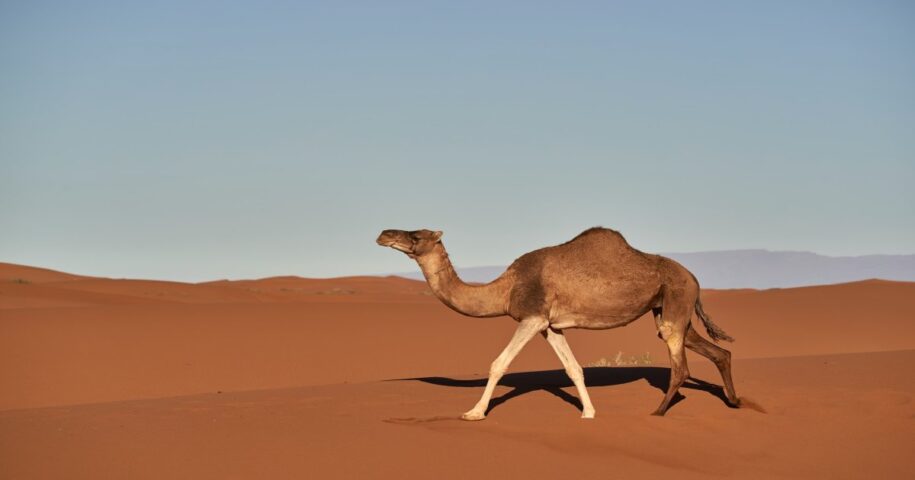
Leave a Reply